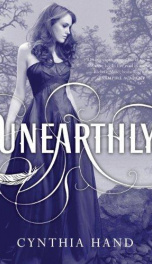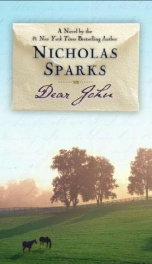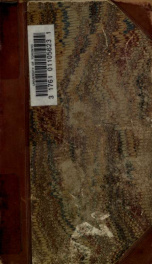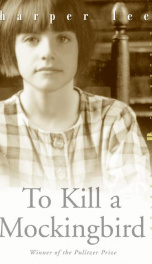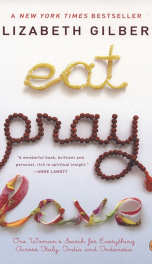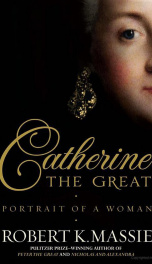Burnett, Frances Hodgson

Frances Hodgson Burnett (1849 - 1924) was born at Cheetham Hill, Manchester on November 24, 1849.AÂ Four years after her birth, her father died, leaving her mother with five children and little money.AÂ Her mother carried on the family business, running a wholesale firm that supplied art materials to wealthy manufacturers.AÂ Her efforts failed in part due to the effects of the American Civil War.AÂ Though this, Frances seemed to have been happy and had a fertile imagination.AÂ She wrote her first poem at the age of 7 and began writing melodramatic novelettes.AÂ In 1864 the family Mrs. Hodgson was forces to sell the store and the family moved to Knoxville, Tennessee after receiving a letter from her brother.
The family situation did not improve.AÂ Frances decided to send a story to an editor.AÂ Her paper and postage-stamps for the venture had to be earned by picking and selling wild grapes.AÂ In 1868, at the age of 18, her first stories were published in Godey's Lady's Book:AÂ Hearts and Diamonds AÂ and Miss Caruther's Engagement.AÂ She began to write five or six stories each month, for $10 apiece and supported her family by writing.
In 1873 she married Dr. Swan Burnett, whom she had known since she was 15, following a trip to England.AÂ Their honeymoon in New York was also a business trip.AÂ Frances gave birth to her first child Lionel, in 1874.AÂ AÂ Then the family traveled to Paris where her second son Vivian was born.AÂ Her first novel That Lass o'Lowrie's, about a pit girl in a coal mine was published during this time, and the book was unanimously praised.AÂ Unfortunately, U.S. copyright laws did not apply in Britain at that time and Frances did not receive royalties from the British edition.AÂ In 1877, they returned to America and settled in Washington D.C.
She began moving in literary circles, which would continue for the rest of her life.AÂ She entertained lavishly, began taking an enormous interest in dress and clothes and a deep interest in the dramatization of her books.AÂ Success followed success (Laski, 1950).
She published Haworth's in 1879, and in order to protect the copyright and royalties in England, she fulfilled the legal requirement of standing on the soil of a British dominion on the day of the British publication by quickly traveling to Canada.AÂ However, the British copyright laws did not apply to plays, and British playwrights were not prevented from stealing her material to write and produced stage versions of her books and stories that she received no payment for.AÂ She wrote her own That Lass o'Lowrie's play, produced in New York City, which was not successful, but enjoyable and something she wished to try again.As she grew more famous, she was often ill and depressed.AÂ She was often talked about, as it was unusual then for a woman to work with men and to often be away from her husband and sons.Her first novel for children, written at the suggestion of her son Vivian wasAÂ Little Lord Fauntleroy, published in 1885.AÂ Her son wrote, "It's sales reached proportions at that time unusual for a children's story and began to produce royalties that far out-distanced any that the already well-known authoress had received on novels for adults that were called highly successful."AÂ The book earned her more than $100,000 with a hugely successful play following it.AÂ Velvet suits became a world-wide fashion craze, much to the dismay of many young boys.In 1887, she visited London, with her sons and a friend, for the Golden Jubilee celebrations for Queen Victoria.They traveled to France and Italy.AÂ Sara Crewe was published the next year.AÂ Later Frances extended the story under a new title, A Little Princess.
During her trip, Frances learned of a staging of Little Lord Fauntleroy written by Seebohm that was to open soon, without her permission.AÂ She hurried to London, writing her own Fauntleroy play on her journey.AÂ Her version opened 3 months later in May 1888 starring the famous child actress Vera Beringer.AÂ Frances received better reviews and among the crowds who came to see the play were Prince Edward and his wife.AÂ Frances sued Seebohm, and the judge ruled in her favor setting a precedent for all similar cases.AÂ Authors could now stop playwrights from making plays of their books without permission.AÂ The Society of British Authors gave Frances a banquet in her honor as well as a diamond ring and bracelet and a certificate of thanks.AÂ With this, Frances had become a international celebrity with everything she did (and her family did) making news AÂ In 1889, she and Vivian traveled to the World's Fair in Paris.
In 1890, her eldest son died of consumption and she was consumed with overwhelming grief.AÂ Her works written during this time convey this grief:AÂ "Giovanni and the Other," The White People AÂ and AÂ In the Closed Room.AÂ In 1892, she returned to Washington and wrote a new book The One I Knew the Best of All, a story of her own life to age 18.
Although in mourning and although she refused requests for interviews, reporters continued to write about her, criticizing her trips, marriage, son, books, clothing, and linked her name romantically with many of her male friends.Her marriage to Dr. Burnett ended with a divorce in 1898.AÂ She remarried her business manager, a doctor/actor, Stephen Townsend in 1900.AÂ It is speculated that this marriage may have been due to Townsend blackmailing Burnett.AÂ This marriage came to an end in 1902.AÂ In 1905 she became a United States citizen.
In later years, public sentiment and reporters turned against her in full and she renewed her efforts to live out of the spotlight.AÂ Her last public appearance was the screening of Little Lord Fauntleroy the film in 1921, starring Mary Pickford as Cedric.
She died at the age of 74 on October 29, 1924.
do you like this author?
What readers are saying
What do you think? Write your own comment on this book!
write a commentWhat readers are saying
What do you think? Write your own comment on this author!
write a commentBook list
What readers are saying
What do you think? Write your own comment on this author!
write a commentGenre
- Nonfiction / Politics / General
- Books / Agricultural exhibitions / Nova Scotia / Kentville
- Literature & Fiction / Contemporary
- Books / Burnett, Frances Hodgson,1849-1924
- Books / Boarding schools / Juvenile fiction
- Literature & Fiction / Classics
- Literature & Fiction / Genre Fiction / Action & Adventure
- Literature & Fiction / Authors, A-Z / (D) / Dumas, Alexandre
- Nonfiction / Education / Education Theory / History
if you like Burnett, Frances Hodgson try:
readers also enjoyed
What readers are saying
What do you think? Write your own comment on this author!
write a commentGenre
- Nonfiction / Politics / General
- Books / Agricultural exhibitions / Nova Scotia / Kentville
- Literature & Fiction / Contemporary
- Books / Burnett, Frances Hodgson,1849-1924
- Books / Boarding schools / Juvenile fiction
- Literature & Fiction / Classics
- Literature & Fiction / Genre Fiction / Action & Adventure
- Literature & Fiction / Authors, A-Z / (D) / Dumas, Alexandre
- Nonfiction / Education / Education Theory / History
if you like Burnett, Frances Hodgson try:
readers also enjoyed
Do you want to exchange books? It’s EASY!
Get registered and find other users who want to give their favourite books to good hands!

